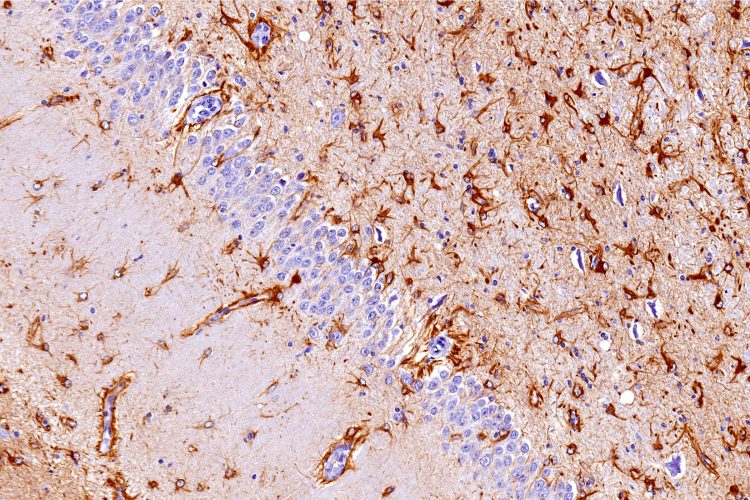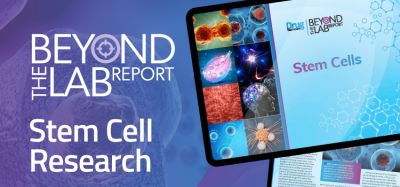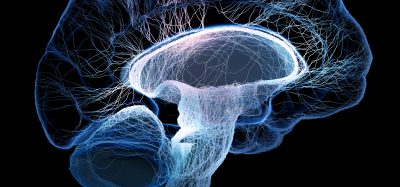GFAP gene mutation creates tangles in brain cells – cause of neurological disease
Posted: 26 October 2018 | Drug Target Review | No comments yet
A recent study in the U.S. has identified how a mutation in the GFAP gene, which encodes for the GFAP protein, causes the tangles in brain cells associated with Alexander disease and may also impact other neurological diseases.


A pioneer in the study of neural cells has revealed how a single mutation affecting the most common protein in a supporting brain cell (GFAP) produces devastating, fibrous globs. These, in turn, disturb the location of cellular processing units, harm the flow of energy and signals through the brain, and reduce the formation of myelin, an essential insulator for neurons.
Su-Chun Zhang, a professor of neuroscience at the University of Wisconsin-Madison who is a medical doctor and PhD researcher, looked at astrocytes, which play multiple roles in the brain and comprise 20 to 40 percent of brain cells.
The astrocytes used in the study were grown from adult cells that were converted into stem cells. The adult cells were donated by the families of two patients with Alexander disease – a rare, fatal genetic disorder.
Once grown in a lab dish, the astrocytes demonstrated the hallmarks of Alexander disease, including tangles of a protein called GFAP, and errant locations of mitochondria and other cellular processing units.
GFAP, or glial fibrillary acidic protein, is a cytoskeleton protein, giving the astrocyte its distinctive star-like shape.
When the stem cells that were the source of the astrocytes were corrected with gene editing, those astrocytes subsequently derived from the engineered stem cells showed no signs of Alexander disease.
After decades of focusing on the role of neurons, now astrocytes and other glial cells are increasingly recognised for their essential contributions to neuron health and their role in disease.
Fortunately, Alexander disease is very rare, says Zhang, but rare diseases matter in neuroscience. Commenting on the reason for this, Zhang said: “We often grow to understand a disease process through rare diseases. One mutation discovered in a family with Lou Gehrig’s disease led to the discovery of the fundamental pathogenesis of ALS, and the same is true for Parkinson’s and Alzheimer’s.”
Through studies by co-author Albee Messing, a professor emeritus of comparative biosciences, and others at UW-Madison, Alexander has been linked to a mutation in the GFAP gene, “which encodes for a protein that is very, very common in astrocytes,” Zhangsays.
GFAP is so common, in fact, that astrocytes are identified through its presence. Zhang explained: “GFAP was a big player for some reason, but nobody knew the broad range of effects, up until today.”
The study describes how Zhang, alongside first author Jeffrey Jones, now a postdoctoral fellow at the Salk Institute, and others, used cell cultures to identify the role of the GFAP mutation in Alexander disease.
Alexander disease, a long-time focus of Messing‘s research, provided an ideal keyhole to study the most common protein in astrocytes, Zhangsays, “but after 20 years, we still had not figured out how the mutant GFAP caused this fatal disease.”
Although common in astrocytes, GFAP is not present in other cell types.
The damage seems to start with aggregated filaments inside the astrocytes that cause widespread tangles and likely trigger a broad disturbance in cellular subunits that produce proteins, process energy and store chemicals.
“The organelles – the mitochondria, endoplasmic reticulum and lysosomes – were all distributed abnormally,” Zhang says, “and that was a clue that GFAP is critical for guiding organelles to their correct locations.”
There are no immediate clinical implications, but the study’s impact could nevertheless be broad, Zhangsays. “This protein is altered in astrocytes in Alexander, and virtually every single neurological disorder, including Alzheimer’s, Parkinson’s, Huntington’s, ALS and autism.”
Growing human brain cells in lab dishes was key to the findings. Zhang was the first scientist to convert all-purpose human stem cells into neural cells. He has since learned to differentiate these stem cells into a wide range of brain cells, including neurons, the classic signal carriers, and the “helper” cells such as astrocytes.
Zhang, using lab-forged human brain cells, was able to avoid complications inherent in animal studies. “For Alexander, like any other disorder, we have used flies, mice and rats. When we express the mutant protein, the protein becomes aggregated instead of filamentous. But with animals, we always have some issue, because when we change the protein level, the cells of course will respond. But the exact relationship to the disease is a question mark.”
Broadly speaking, he adds, “we saw something we did not expect, that the mutation created problems for the molecular trafficking system” that moves molecules in, through and out of the cells. The mutation also harmed a signalling system based on movement of calcium ions.
One mutation, thus, has profound effects, he says. “Without the correct traffic system, molecules cannot move in and out of the cell correctly, and so the cell cannot do its job. GFAP is fundamental. And when we corrected the mutation, the cells looked normal.”
GFAP, he stresses, “is the most abundant protein in astrocytes, and we already knew it’s altered in nearly all neurological conditions. While understanding how Alexander disease occurs is important, we’re even more excited by the fundamental biology.”
The study was published in Cell Reports.
Related topics
CRISPR, Disease Research, DNA, Genome Editing, Neurons, Protein Expression, Stem Cells
Related conditions
Alexander disease, Neurological disease
Related organisations
University of Wisconsin-Madison
Related people
Albee Messing, Jeffrey Jones, Su-Chun Zhang








